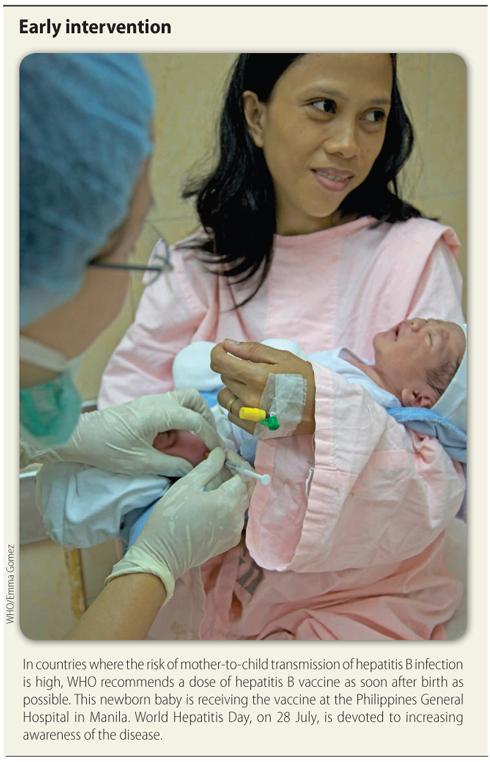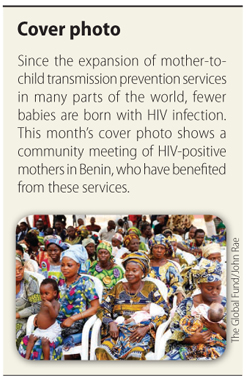NEWS
Public health round-up

Grim global picture: violence against women
About 35% of all women worldwide have experienced physical and/or sexual violence, according to a new global report. Global and regional estimates of violence against women: prevalence and health effects of intimate partner violence and non-partner sexual violence shows that most of this is violence perpetrated by intimate partners.
Worldwide, almost one third of women in a relationship experience physical and/or sexual violence by their intimate partner. In some regions, as many as 38% of women have experienced intimate partner violence, the report found.
"The findings confirm the fact that intimate partner violence and non-partner sexual violence are widespread and affect women throughout the world," the report said.
The report, developed by the World Health Organization (WHO), the London School of Hygiene and Tropical Medicine and the South African Medical Research Council, is the first global systematic review and synthesis of the scientific data on the prevalence of violence by an intimate partner and sexual violence by someone other than a partner.
According to the report, such violence is a major contributor to women's mental health problems, particularly depression and suicidal thoughts, as well as to sexual and reproductive health problems, including maternal health and neonatal health problems.
WHO issued new guidelines on this topic last month for health-care workers and policy-makers entitled Responding to violence against women. WHO clinical and policy guidelines. The report and the guidelines are available online at: http://www.who.int/reproductivehealth/publications/violence/9789241564625
http://www.who.int/reproductivehealth/publications/violence/9789241548595
Syrian appeal revised
The United Nations (UN) launched a humanitarian appeal for US$ 4.4 billion on 7 June the largest in the history of the organization to assist the growing number of people affected by the crisis in the Syrian Arab Republic.
The appeal, revised from US$ 1.5 billion in January, aims to cover relief activities for the Syrian Arab Republic Humanitarian Assistance Response Plan (SHARP) and the Regional Response Plan (RRP).
Of the US$ 4.4 billion requested, US$ 1.4 billion is earmarked to go to SHARP, to assist people inside the country, and US$ 3 billion to RRP, which provides life-saving aid and protection to Syrian refugees in the surrounding region. So far, US$ 1.2 billion has been received.
The UN estimates that 6.8 million people roughly one third of the 20.7 million Syrian population are in need of urgent help. The Syrian health system has been severely disrupted limiting the provision of primary and secondary care.
According to WHO's most recent health update on the country, there are severe shortages of medicines. Many of the country's health facilities are out of service, including 33 (37%) of its 89 hospitals and 146 (8%) of its 1919 health centres.
In addition to the revised appeal, the Governments of Lebanon and Jordan are seeking US$ 450 million and US$ 380 million, respectively, to support their efforts to provide education, health and other services to Syrian refugees sheltering in their countries.
Middle East virus
A total of 55 laboratory-confirmed cases of infection with a newly discovered virus were reported to WHO by nine countries between September 2012 and 7 June 2013.
The virus is distantly related to the virus that caused severe acute respiratory syndrome (SARS) and was recently named Middle East respiratory syndrome coronavirus (MERS-CoV) by the Coronavirus Study Group of the International Committee on Taxonomy of Viruses. The first documented MERS-CoV cases occurred in Jordan in early 2012.
Since then, the overall number of cases has been low, but the virus has caused 31 deaths (about 60% of patients) and many of them in people who had one or more major chronic conditions.
Forty of the 55 cases to date occurred in Saudi Arabia. The rest were reported from other countries in the Middle East (Qatar and the United Arab Emirates), from Tunisia in North Africa, and from France, Germany, Italy and the United Kingdom of Great Britain and Northern Ireland in Europe.
There appear to be three main epidemiological patterns: first, sporadic cases that occur in communities, the sources of which are unknown; second, clusters of infections in families where there appears to have been person-to-person transmission; and third, clusters of infections in health-care facilities.
There is no evidence of widespread person-to-person transmission of MERS-CoV. Where it has been suspected that the virus has been transmitted from person to person, it appears that there had been close contact between somebody who was sick and another person, such as a family member, a fellow patient or a health-care worker.
WHO is urging its Member States to continue their surveillance for severe acute respiratory infections and to carefully review any unusual patterns. http://www.emro.who.int/press-releases/2013/corona-virus-who-saudi-arabia-mission.html
http://www.who.int/csr/don/2013_06_07
Floods and health
A new WHO report looks at the adverse health effects of floods and recommends ways in which countries can protect the health of the people affected by them.
The report, entitled Floods in the WHO European Region: health effects and their prevention, released in May, is based on a survey of the 53 countries in the WHO Region between 2009 and 2011 and peer-reviewed literature, case studies and other sources.
Floods are the most common natural disaster in the WHO European Region. They have occurred in 50 of its 53 countries in the past decade, affected some 3.4 million people and killed over 1000. Only last month, large swathes of Austria, Germany and the Czech Republic including the capital Prague were under water while authorities struggled to stem the flooding and limit the damage.
The report found that most flood-related deaths during the last decade occurred in central Europe and the former Soviet republics and it showed that more effort is needed to include health protection and the health sector in flood management plans and mechanisms.
Moreover, current flood emergency management plans that explicitly feature health protection mechanisms often consider only short-term health effects, failing to address important long-term health outcomes of floods.
Health problems observed during and after floods include injuries, heart attacks, electrocutions, poisonings and acute mental health conditions while outbreaks of infectious disease are rare in this WHO Region. Longer-term health effects, may result from displacement, loss of property and livelihoods, shortages of safe water, injuries and disruption of access to health services.

The report recommends measures that countries can take to minimize risks, including long-term land-use planning, emergency plans that integrate health protection from the start and flood-proofing of health-care facilities.
It was compiled by WHO's Regional Office for Europe and the United Kingdom Health Protection Agency. http://www.euro.who.int/en/what-we-publish/abstracts/floods-in-the-who-european-region-health-effects-and-their-prevention 

